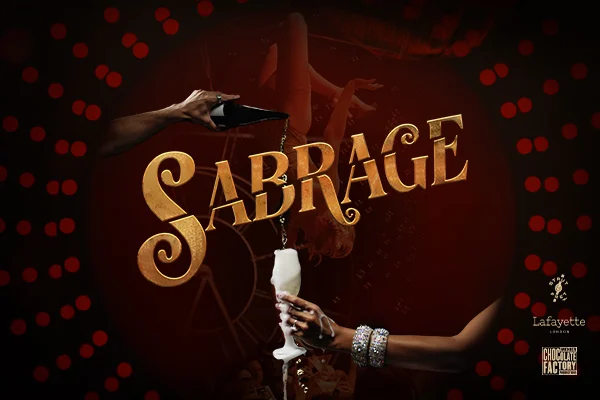Alan Conway spent several years pretending to be Stanley Kubrick, a man he knew very little about – and people believed him. This is a fun and fascinating starting point for a piece of theatre. This collaboration between PIT and New Diorama charms and entertains, but doesn’t quite deliver as satisfying a theatrical experience as it has the potential to.
The production is very good at marrying its style with its subject-matter. Conway is played by four actors, one male, three female, all dressed in the same grey shirt, tie, cardigan and slacks. Conway is back in ghost form, justifying his life to his frustrated son (Andy McLeod). It’s very appropriate that a man with such an unstable identity should tell his life story without ever having a fixed stage persona, as the four Conways simultaneously play Alan and the significant characters of his life. Fitting, too, is the way in which each scene melts into the next as a screen is wheeled back and forth across the stage, the actors disappearing and changing behind it in order to tell the next part of the story. It’s slick and impressive stagecraft.
Ed Cobbold plays the male (and main) Conway, and communicates the man’s haphazard shambling quality excellently. Of the women, Leah Milner stands out; her physical and verbal comedy is consistently chuckle-worthy as she shifts between Julie Walters, Conway’s wife and other characters with entertaining agility.
The problem, though, is that the production is rather limited by the conceptual approach that the company have taken. By choosing to stick to the true events of Conway’s life, rather than just beginning with the basic idea, the only scope for imagination has been over how to portray it, rather than what to portray. They could have done to do a little more conning themselves.
More importantly, though, having shown us the story of Alan Conway, the company don’t really do anything with it. This isn’t really a piece of theatre that properly grapples with any questions – why, for example, did Conway do it? In the final section of the play, a clip from a real interview with Conway is played – he intriguingly talks about the pleasure he felt from seeing people meet Kubrick, their idol. It’s a jarring and intriguing motivation, but one that this company leaves unexplored.
This is undoubtedly a fun, ably-executed show. It’s just a shame that the company weren’t a little more adventurous and rigorous with their initial conceptual decisions. For a story about such a variable and indefinite man, there’s little ambiguity here.



















